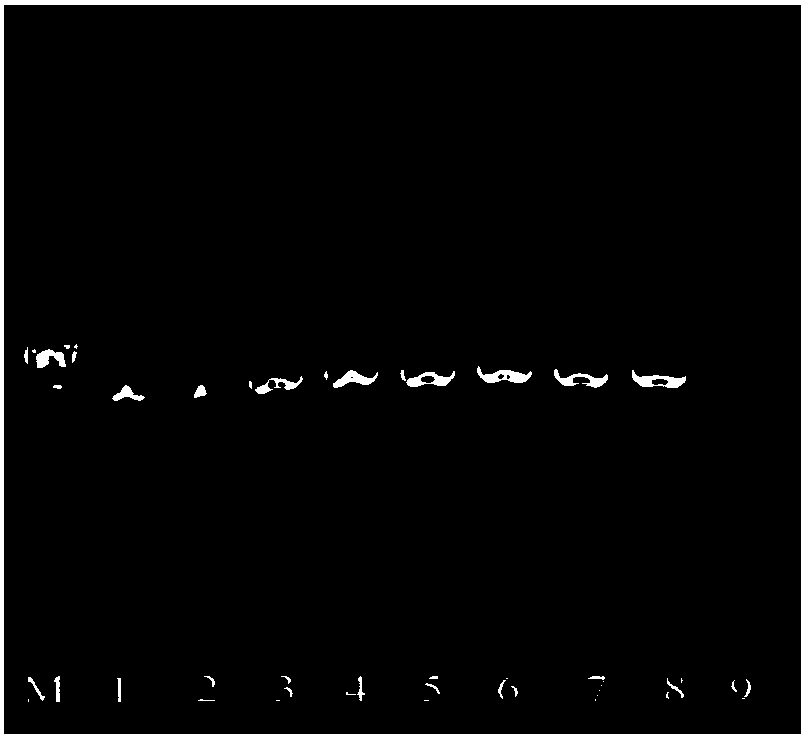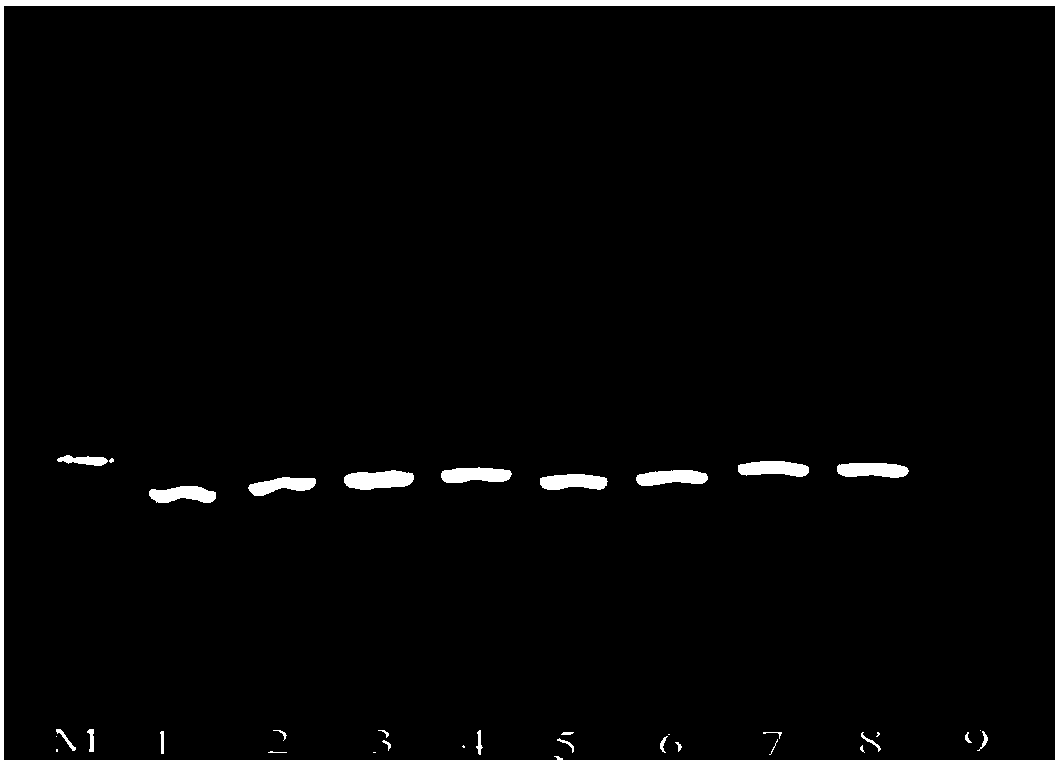Method for identifying capparis spinosa and capparis tenera and application thereof
A technology of capers and capers, which is applied in the field of molecular biology detection, can solve problems affecting the quality and safety of medicines, confusion between capers and capers, and poor practicability, and achieve easy mastery and accuracy High and wide applicability
- Summary
- Abstract
- Description
- Claims
- Application Information
AI Technical Summary
Problems solved by technology
Method used
Image
Examples
Embodiment 1
[0032] Unless otherwise specified, the following examples are all in accordance with conventional experimental conditions, such as the operating technical regulations described in the molecular cloning experimental manual such as Sambrook (New York: Gold Spring Harbor Laboratory Press, 1989), or according to the experimental conditions suggested by the manufacturer ; The raw materials used are all commercially available commodities. Example 1 Establishment of the identification method of capers and capers
[0033] 1.1 Sample source
[0034] The sample sources of capers and capers used in this example are shown in Table 1:
[0035] Table 1 Sample sources of capers and capers
[0036]
[0037] 1.2 DNA extraction
[0038] Take about 30 mg of each sample, quickly grind it into fine powder in liquid nitrogen, and use a plant genomic DNA extraction kit to extract the total DNA of the sample. The specific steps are carried out according to the instructions provided by the kit. ...
Embodiment 2
[0052] Practical application of the identification method of embodiment 2 capers and capers
[0053] 1.1 Sample source
[0054] In this example, the samples of the genus Caper were collected from Turpan, Aksu, Urumqi, Xinjiang; medicinal material markets, such as Xishuangbanna, Yunnan, botanical gardens, or the wild. See Table 2 for details.
[0055] Table 2 Sample sources of Caper
[0056]
[0057] 1.2 DNA extraction
[0058] Take about 30 mg of each sample, quickly grind it into fine powder in liquid nitrogen, and use a plant genomic DNA extraction kit to extract the total DNA of the sample. The specific steps are carried out according to the instructions provided by the kit. The kit uses plant genomic DNA from Beijing Tiangen Company. extraction kit.
[0059] 1.3 PCR primers
[0060] Primers were synthesized by Beijing Huada Gene Co., Ltd. (Beijing). The primers were dissolved with sterile deionization and diluted to 5 μmol / L. The specific primers are as follows:
...
PUM
 Login to View More
Login to View More Abstract
Description
Claims
Application Information
 Login to View More
Login to View More - R&D
- Intellectual Property
- Life Sciences
- Materials
- Tech Scout
- Unparalleled Data Quality
- Higher Quality Content
- 60% Fewer Hallucinations
Browse by: Latest US Patents, China's latest patents, Technical Efficacy Thesaurus, Application Domain, Technology Topic, Popular Technical Reports.
© 2025 PatSnap. All rights reserved.Legal|Privacy policy|Modern Slavery Act Transparency Statement|Sitemap|About US| Contact US: help@patsnap.com



